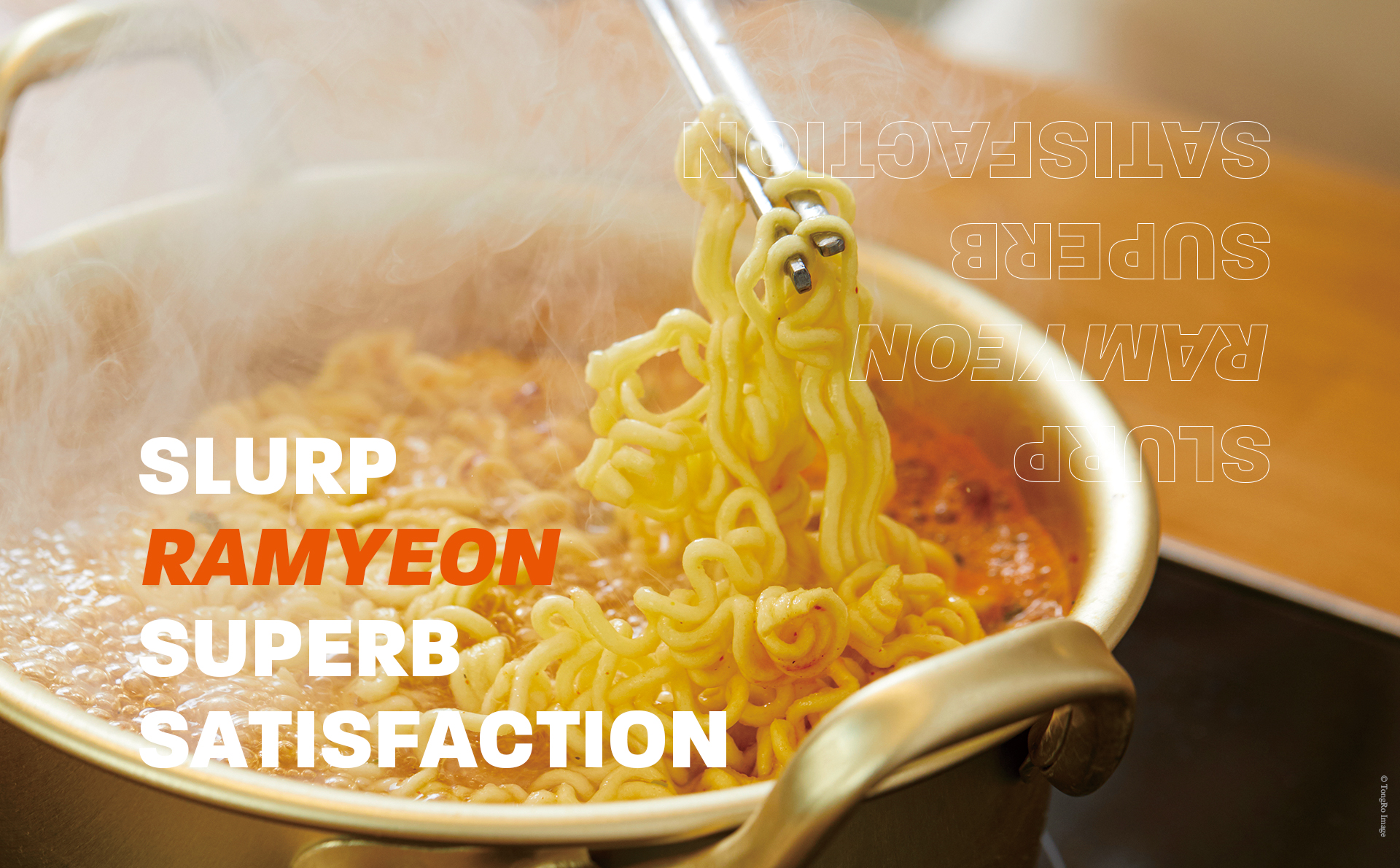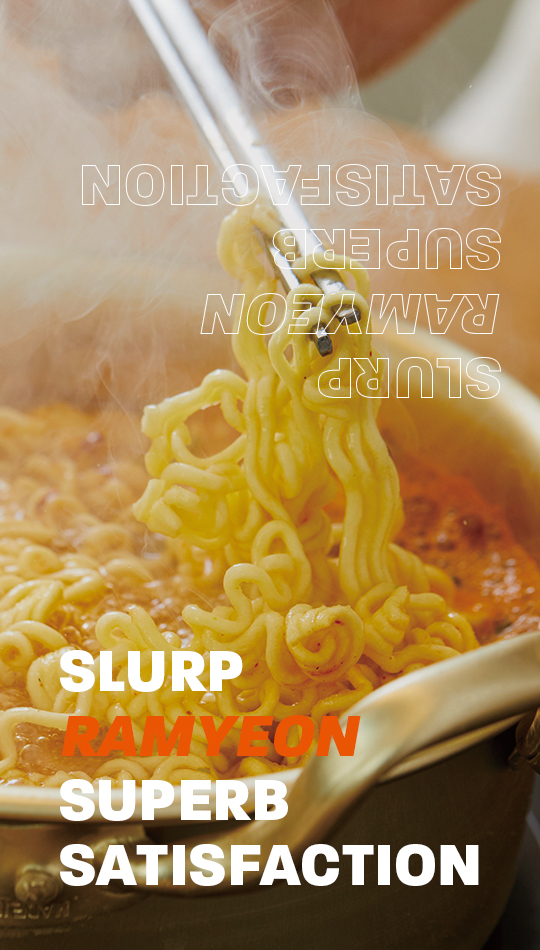Certain foods represent Korea, such as kimchi, bibimbap (rice with mixed vegetables and meat) and tteokbokki (stir-fried rice cake), but Koreans especially love ramyeon. Ramyeon is cheap, easy to make, and comes in many flavors. According to the World Instant Noodles Association, Korea’s annual ramyeon consumption is 3.95 billion units, placing the country eighth in the world. Korea’s per capita ramyeon consumption is 77 units, placing the country second in the world. Ramyeon has, therefore, earned its designation as a “national food.”


Writer. Jang Heejoo
The history of the national food ramyeon dates back to 1963. It all began with Samyang Ramen, launched by the honorary president and founder of Samyang Foods, Chun Joong-Yoon. However, Samyang Ramen did not receive the same amount of love when it was first released as it does today. The Korean diet was centered on rice then and soup with the light taste of chicken broth did not suit the taste of Koreans.
However, ramyeon consumption soon began to increase during the mid-1960s thanks to the government’s enactment of a policy to encourage flour consumption as well as the addition of spice to ramyeon. Ramyeon was able to permeate people’s daily lives, and the dish began to grow in earnest during the 1980s. Neoguri and Chapagetti, the ingredients in the chapaguri dish featured in the movie Parasite, and Shin Ramyun, the most beloved dish among Koreans, were also created during the 1980s. In the 2000s, products that combined other items appeared such as pasta-flavored ramyeon with cheese powder, seasoned chicken-flavored ramyeon and miyeokguk (seaweed soup) ramyeon. The continuous development has led to the creation of over 400 kinds of ramyeon.
Korean ramyeon is now a food that is loved not only by Koreans but people all around the world. Ramyeon recipes that have appeared in famous Korean movies or dramas or have been recommended by celebrities spread quickly through social media. YouTube creators even upload content for a “fire food challenge” that features Korean spicy ramyeon. The popularity of ramyeon can also be confirmed through numbers. By Oct. 2023, ramyeon exports had amounted to USD 785 million, the largest amount in Korean ramyeon export history. Korea exports ramyeon to over 120 countries around the world.
Ramyeon is more than just a food that appeases hunger; it has become a key element in promoting the country. Are you curious how ramyeon, which has completely changed over half a century, will change in the future? We look forward to seeing what other ways ramyeon will delight us. It will be a world more delicious than anything we could ever imagine.
Corn Cheese
Spicy Ramyeon
7 Minutes
INGREDIENTS
1 pack of spicy buldak (extremely spicy chicken) sauce ramyeon, 3 cups of water, about 6 tablespoons of canned corn, 1 tablespoon of sugar, 2 tablespoons of mayonnaise, 70g of mozzarella, finely crushed seaweed (optional) and roasted sesame seeds (optional).
- Empty the canned corn into a sieve and drain the water.
- Mix the canned corn, sugar, mayonnaise and mozzarella together.
- Boil the noodles in boiling water for four and a half minutes, then pour out the water and mix in the sauce.
- Transfer the ramyeon to a bowl, top it with the cheesy corn mixture, and microwave it for a minute and a half.
- Place the powder, seaweed and sesame seeds on top of the melted cheese and enjoy.
Peanut Butter
Ramyeon
10 Minutes
INGREDIENTS
1 pack of ramyeon, 2-3 cups of water, 1 tablespoon of peanut butter, minced pork, a handful of chopped green onions, 1 tablespoon of minced garlic and 3 tablespoons of oil.
- Add oil to a pan, fry the chopped green onions and garlic, add the minced pork, and cook.
- Set aside the stir-fried meat separately, and add 2-3 cups of water to the pan. Then add the ramyeon and boil.
- Add one tablespoon of peanut butter and one tablespoon of red pepper powder when the noodles begin to break up.
- When the noodles are fully cooked, transfer them to a bowl and top with the sliced green onions.
